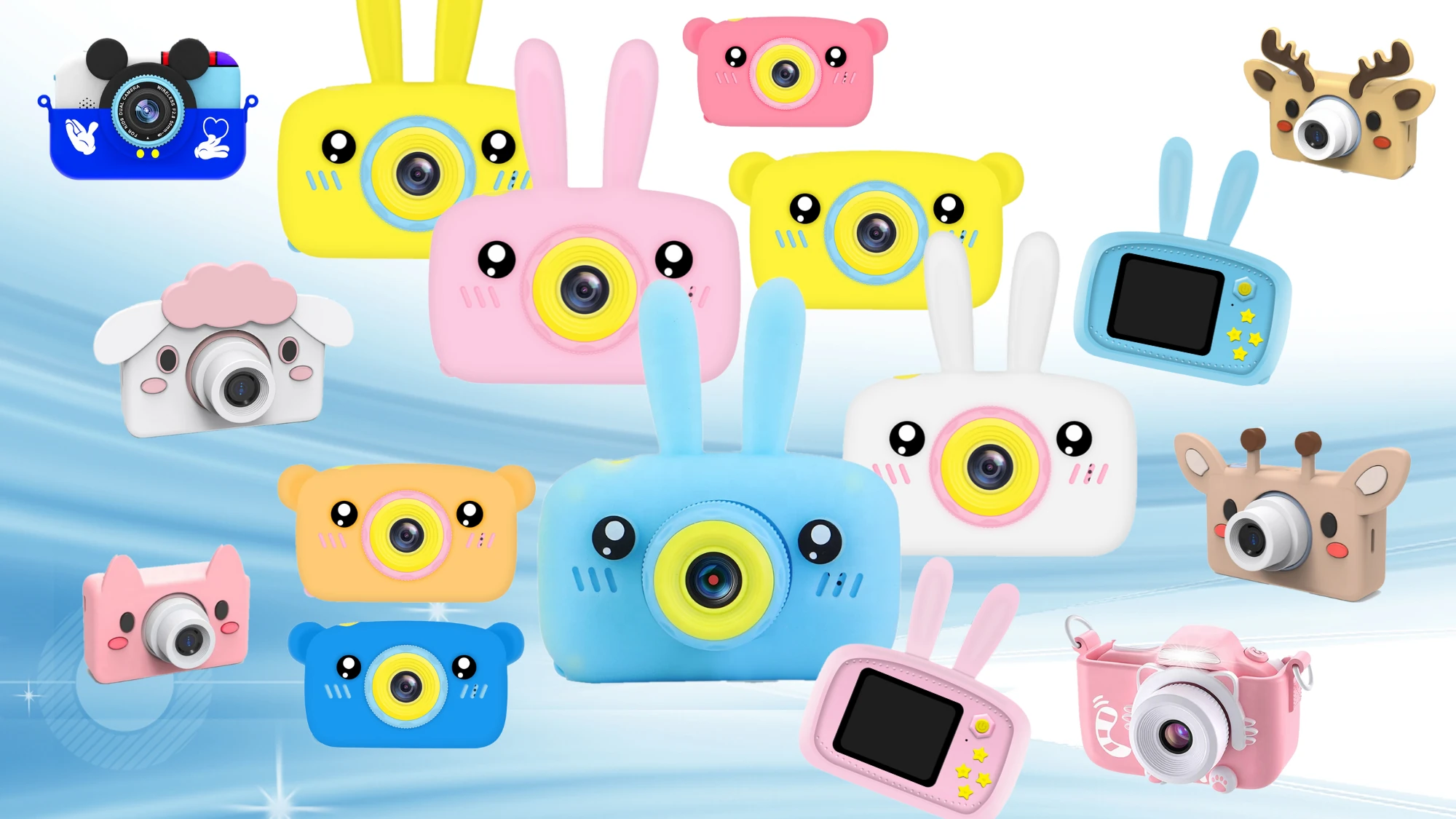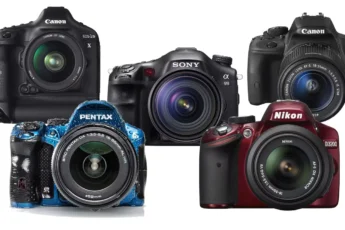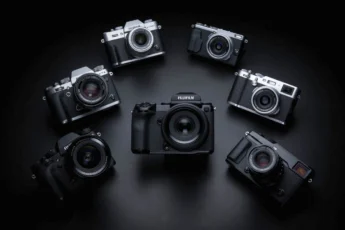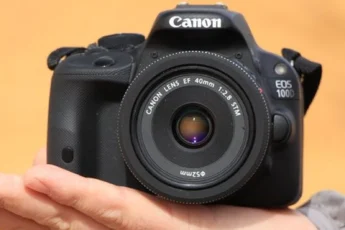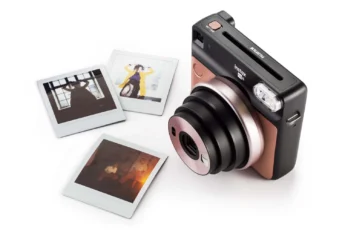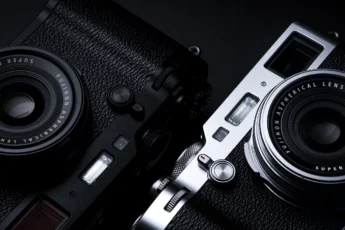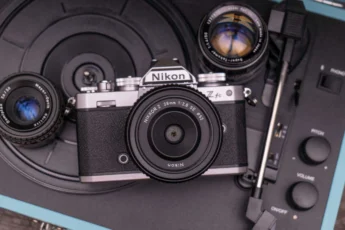Photography is a wonderful way for children to explore the world around them, express their creativity, and develop valuable life skills. As parents, we often wonder when the right time is to introduce our kids to the joys of capturing moments through a lens. In this comprehensive guide, we’ll explore the best cameras for 8-year-olds, considering factors like age appropriateness, durability, ease of use, and features that cater to a child’s unique needs and interests.
As professional photographer and educator, John Smith, notes, “Introducing children to photography at a young age can have a profound impact on their cognitive and emotional development. It encourages them to observe their surroundings more closely, think creatively, and communicate their unique perspectives through images.”
- What Age is Appropriate for a Child to Have a Camera?
- Factors to Consider Before Getting a Camera for an 8-Year-Old
- Best Cameras for 8-Year-Olds
- VTech KidiZoom Duo 5.0 (Ages 3-6)
- Oaxis myFirst Camera 2 (Ages 5-8)
- Oaxis myFirst Camera 3 (Ages 7-11)
- OM System Tough TG-7 (Rugged Camera)
- Instax Mini 12 (Instant Camera)
- Polaroid Go (Cute Instant Camera)
- Features to Look for in Cameras for 8-Year-Olds
- Durability and Ruggedness
- Ease of Use and Kid-Friendly Controls
- Image Quality and Resolution
- Additional Features like Filters, Frames, and Games
- Tips for Teaching Kids Photography
- Basic Photography Techniques
- Encouraging Creativity and Experimentation
- Setting Boundaries and Respecting Privacy
- Safety Considerations for Child Photographers
- Supervision and Guidance
- Digital Literacy and Online Sharing
- Protecting Personal Information and Privacy
- Encouraging and Nurturing a Child’s Interest in Photography
- Exploring Different Photography Styles
- Joining Photography Clubs or Classes
- Showcasing and Celebrating Their Work
- Conclusion
What Age is Appropriate for a Child to Have a Camera?
When determining the appropriate age for a child to start using a camera, it’s essential to consider their developmental stage and cognitive abilities. According to child development experts, most children are ready to handle a camera by the age of 5 or 6, when they have developed sufficient fine motor skills and hand-eye coordination.
However, it’s important to note that every child is unique, and their readiness for photography may vary. Some children may show an interest in cameras as early as 3 or 4 years old, while others may not be drawn to it until later. As a parent, it’s crucial to observe your child’s interests and abilities, and introduce photography when they show genuine curiosity and enthusiasm.
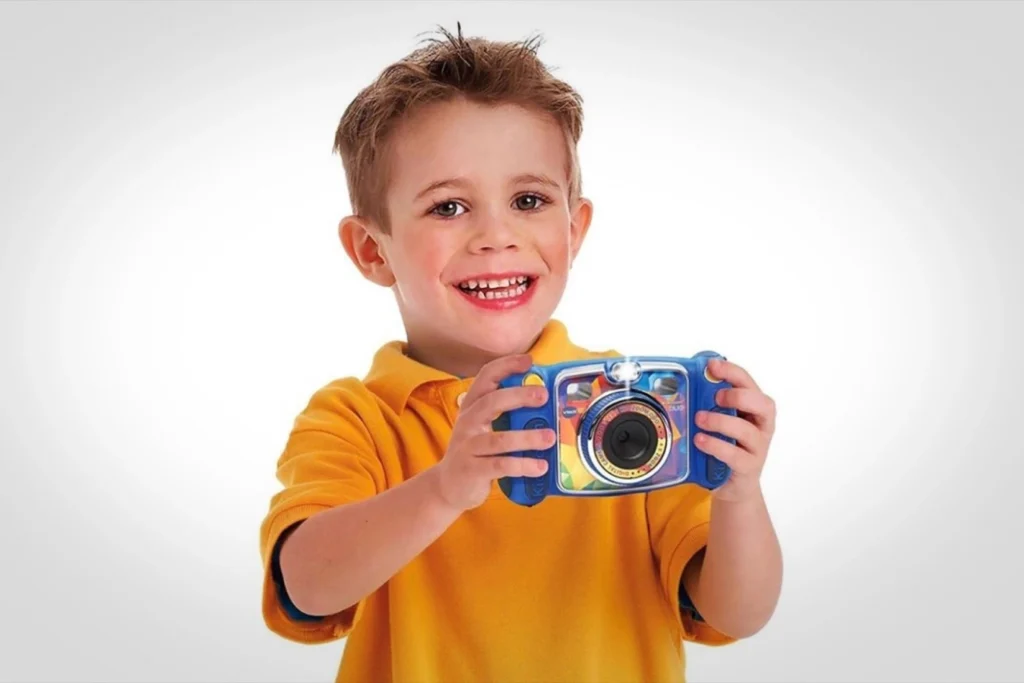
Dr. Sarah Johnson, a child psychologist, suggests, “When introducing photography to young children, it’s important to keep the experience fun and pressure-free. Allow them to explore the camera at their own pace, and encourage them to capture subjects that naturally interest them, whether it’s their favorite toy, a family member, or a beautiful flower in the garden.”
Factors to Consider Before Getting a Camera for an 8-Year-Old
Before investing in a camera for your 8-year-old, there are several practical factors to consider. First and foremost, think about your budget. Cameras designed for children come at various price points, ranging from affordable toy cameras to more advanced, feature-rich models. Determine how much you’re willing to spend, keeping in mind that your child’s interest in photography may grow over time.
Another crucial factor is durability. Kids are notorious for being rough with their belongings, so it’s essential to choose a camera that can withstand the occasional drop or bump. Look for cameras with rugged, child-friendly designs, such as rubberized grips, shockproof casings, and waterproof features.
Ease of use is also a key consideration. A camera with too many complicated settings and buttons may frustrate or discourage a young photographer. Opt for models with intuitive controls, clear icons, and automated functions that allow children to focus on capturing the moment rather than fiddling with settings.
Finally, prioritize safety. Ensure that the camera you choose is age-appropriate and free from small parts that could pose a choking hazard. Consider involving your child in the selection process, allowing them to handle and test different models to find one that feels comfortable and engaging.
Best Cameras for 8-Year-Olds
VTech KidiZoom Duo 5.0 (Ages 3-6)
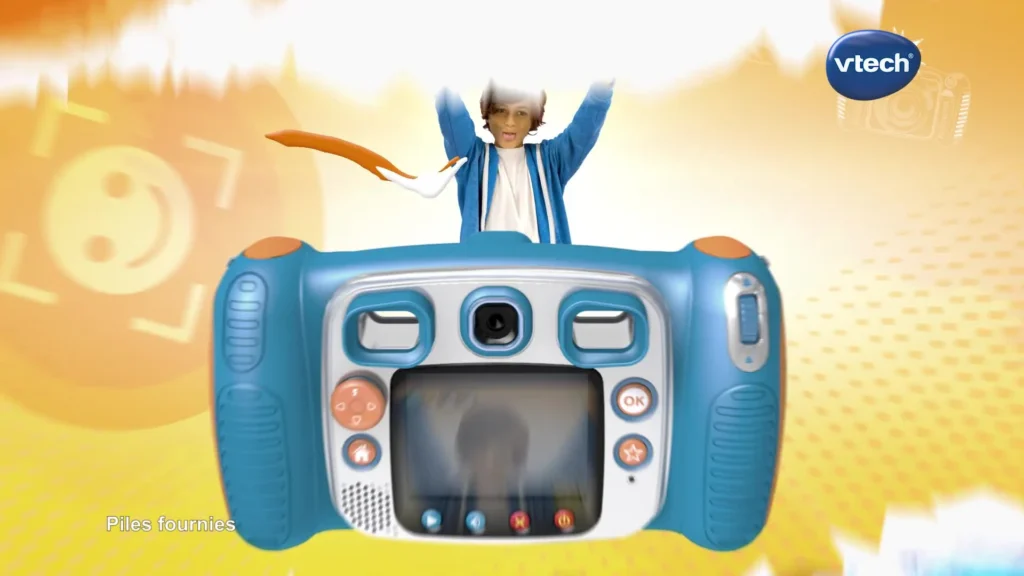
The VTech KidiZoom Duo 5.0 is a popular choice for younger children, with its durable design, large buttons, and intuitive interface. This camera features a 5-megapixel sensor, 4x digital zoom, and a 2.4-inch color LCD screen. Kids will love the built-in games, filters, and frames that encourage creative play and exploration.
One satisfied parent shares, “My 5-year-old daughter absolutely adores her KidiZoom Duo. It’s the perfect size for her little hands, and she loves experimenting with the different filters and effects. The camera has survived countless drops and bumps, and still takes great pictures!”
Oaxis myFirst Camera 2 (Ages 5-8)
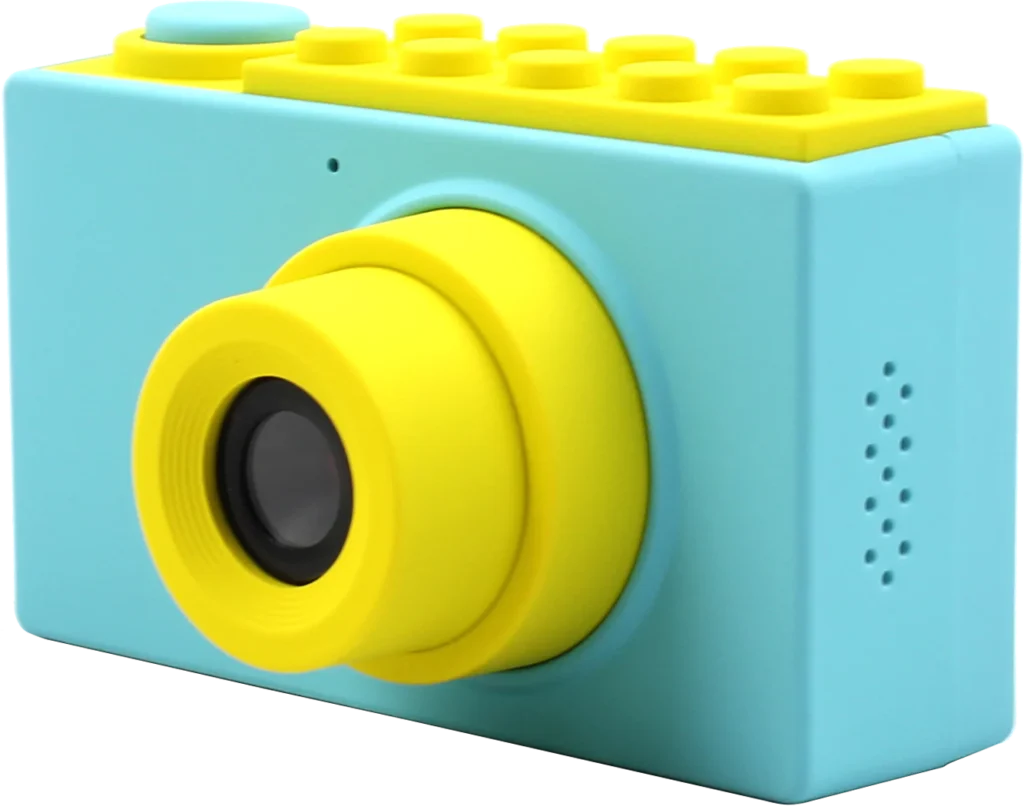
The Oaxis myFirst Camera 2 is a step up from toy cameras, offering more advanced features in a kid-friendly package. With an 8-megapixel sensor, 1080p video recording, and a 2-inch color screen, this camera produces high-quality images and videos. The camera also includes a selfie mode, built-in games, and a durable, waterproof design.
“I bought the myFirst Camera 2 for my 7-year-old son, and he’s been inseparable from it ever since. The camera is incredibly easy to use, and the image quality is impressive for a kids’ camera. I love that it’s waterproof, so he can take it on our beach vacations without worry.”
Oaxis myFirst Camera 3 (Ages 7-11)

For older children who are ready for more advanced features, the Oaxis myFirst Camera 3 is an excellent choice. This camera boasts a 12-megapixel sensor, 1080p video recording, and a 2.4-inch color touchscreen. Kids can explore manual settings like ISO and white balance, while still enjoying the ease of use
of automatic modes. The myFirst Camera 3 also includes a built-in microphone for capturing audio, and a time-lapse feature for creative experimentation.
A budding young photographer shares, “I love my myFirst Camera 3! It’s so easy to use, and I can take really cool pictures and videos with it. I like playing around with the different settings and seeing how they change the way my photos look. It’s definitely my favorite birthday present ever!”
OM System Tough TG-7 (Rugged Camera)
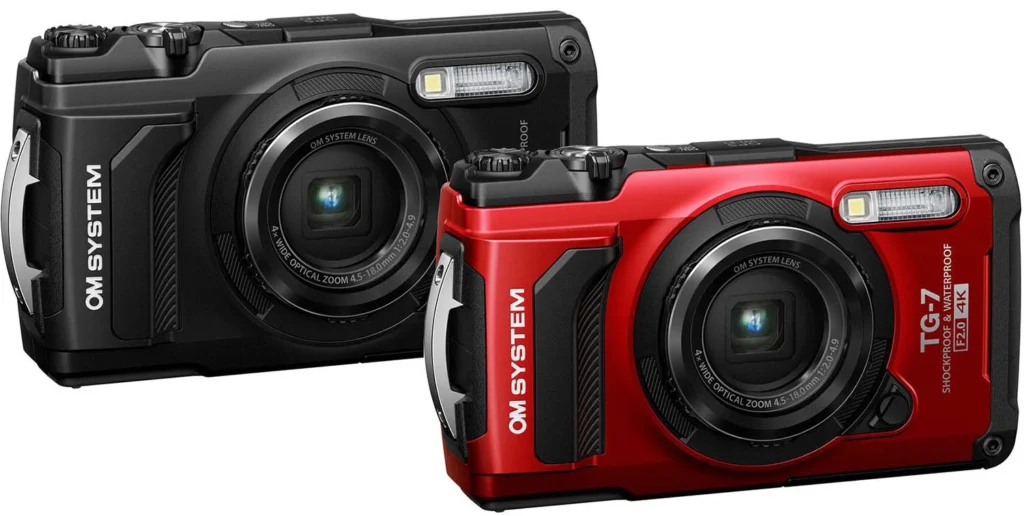
For adventurous 8-year-olds who love exploring the great outdoors, the OM System Tough TG-7 is a rugged, waterproof camera that can keep up with their active lifestyle. This camera features a 12-megapixel sensor, 4K video recording, and a 3-inch LCD screen. With its durable construction, the TG-7 is shockproof, crushproof, and freezeproof, making it the perfect companion for all kinds of adventures.
“My 8-year-old daughter takes her TG-7 everywhere – hiking, swimming, even skiing! The camera has survived so many bumps and drops, and still takes amazing pictures. I love that she can capture all her outdoor adventures and create lasting memories with this tough little camera.”
Instax Mini 12 (Instant Camera)
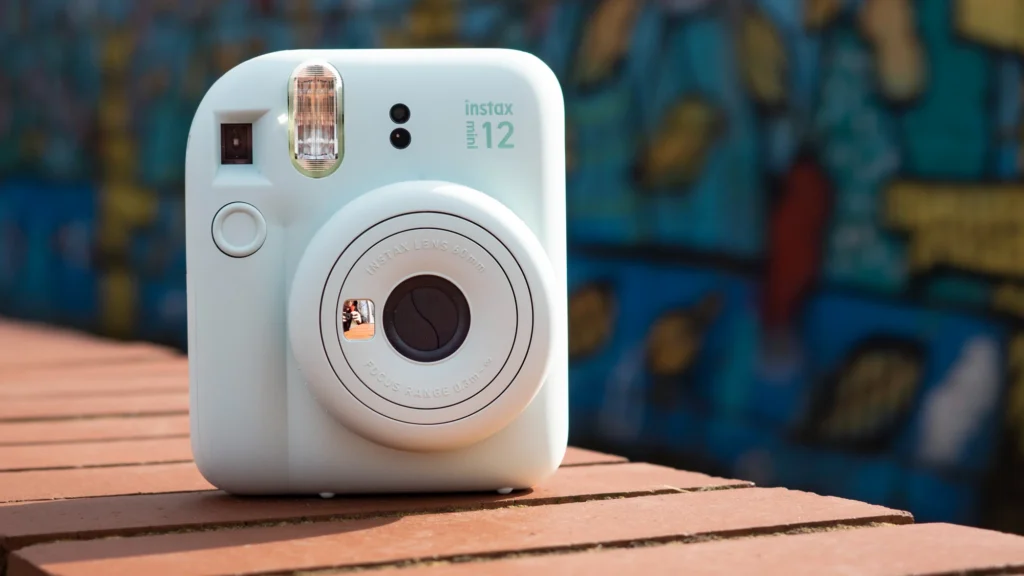
For kids who love the tactile experience of holding a physical photo, the Instax Mini 12 instant camera is a fantastic choice. This camera produces credit card-sized prints instantly, allowing children to see and share their photos right away. With its simple controls and automatic exposure settings, the Mini 12 is easy for 8-year-olds to use and enjoy.
“My son is obsessed with his Instax Mini 12! He loves taking pictures of his friends and family, and seeing the prints develop right before his eyes. It’s a great way for him to practice his photography skills and create fun, tangible keepsakes.”
Polaroid Go (Cute Instant Camera)
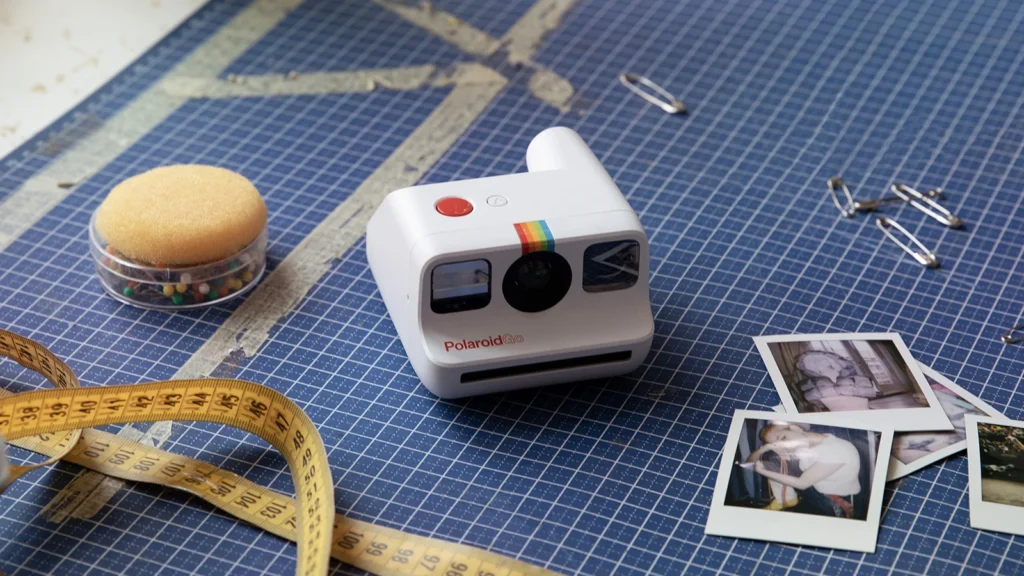
The Polaroid Go is another instant camera option that’s perfect for 8-year-olds. This compact, cute camera produces small, square prints that are perfect for decorating notebooks, making collages, or gifting to friends. The camera’s simple one-button operation and self-timer function make it easy and fun for kids to use.
“The Polaroid Go has been a huge hit at my daughter’s playdates and birthday parties. All the kids love taking turns snapping photos and watching the prints develop. It’s a great way to encourage creativity and social interaction, and the tiny prints are just adorable!”
Features to Look for in Cameras for 8-Year-Olds
Durability and Ruggedness
When shopping for a camera for an 8-year-old, durability should be a top priority. Look for cameras with rugged, child-friendly designs that can withstand the occasional drop, bump, or splash. Rubberized grips, shockproof casings, and waterproof features are all excellent indicators of a camera’s durability.
As technology expert, Mark Thompson, notes, “Kids are naturally curious and active, which means their cameras need to be able to keep up with their adventures. A durable, rugged camera will not only survive the wear and tear of childhood but also encourage kids to take their cameras everywhere and capture their experiences without fear of damaging the device.”
Ease of Use and Kid-Friendly Controls
An 8-year-old’s camera should be easy to use, with intuitive controls and minimal complexity. Look for cameras with large, clearly labeled buttons, simple navigation menus, and automated functions that allow kids to focus on capturing the moment rather than fiddling with settings.
Touchscreen interfaces can be particularly appealing to children who are already familiar with smartphones and tablets. However, ensure that the touchscreen is responsive and the icons are large enough for small fingers to navigate easily.
Dr. Emily Davis, a child development specialist, suggests, “When choosing a camera for a child, prioritize ease of use over advanced features. A camera with too many complicated settings may discourage a young photographer from exploring and expressing their creativity. Opt for models that offer a balance of simplicity and functionality, allowing room for growth as the child’s skills develop.”
Image Quality and Resolution
While image quality may not be the top priority for an 8-year-old photographer, it’s still an important factor to consider. Look for cameras with decent resolution (at least 5 megapixels) and good low-light performance. This will ensure that your child’s photos are clear, sharp, and vibrant, even in less-than-ideal lighting conditions.
Some cameras designed for kids also offer high-definition video recording capabilities, which can be a fun way for children to explore storytelling and capture moving memories.
Professional photographer, Lisa Rodriguez, advises, “Don’t get too caught up in megapixel counts when choosing a camera for a child. While higher resolution can be beneficial, it’s more important to focus on the overall image quality, including color accuracy, sharpness, and low-light performance. A camera with a slightly lower megapixel count but better optics and processing can often produce superior images than a higher-megapixel camera with lower-quality components.”
Additional Features like Filters, Frames, and Games
Many cameras designed for kids come with built-in features that encourage creative exploration and add an element of fun to photography. Look for cameras that offer a variety of filters, frames, and stickers that kids can use to customize their photos and express their unique style.
Some cameras also include built-in games, which can be a great way to keep kids engaged and entertained during downtime. These games often incorporate photography challenges or puzzles, helping children develop their skills and creativity in a playful way.
Child psychologist, Dr. Mark Pearson, notes, “Features like filters, frames, and games can make photography more engaging and rewarding for children. These creative tools allow kids to experiment, express themselves, and develop their own unique photographic voice. Plus, the sense of accomplishment they feel when creating a cool, customized photo can boost their confidence and encourage further exploration.”
Tips for Teaching Kids Photography
Basic Photography Techniques
When introducing photography to an 8-year-old, start with the basics. Teach them how to hold the camera steady, frame a subject, and press the shutter button gently to avoid blur. Encourage them to experiment with different angles and perspectives, such as getting close to a subject or shooting from a low or high vantage point.
As they become more comfortable with the camera, introduce concepts like lighting, composition, and the rule of thirds. Explain how these elements can impact the mood and quality of a photo, and provide examples of well-composed images to inspire them.
Photography educator, Sarah Thompson, suggests, “Keep your explanations simple and relatable when teaching photography to kids. Use everyday examples and hands-on demonstrations to help them grasp concepts like lighting and composition. Encourage them to practice these techniques through fun, themed photo scavenger hunts or challenges that spark their creativity and imagination.”
Encouraging Creativity and Experimentation
One of the most important aspects of teaching photography to kids is fostering their creativity and encouraging experimentation. Provide prompts or themes for photo projects, such as capturing patterns in nature, telling a story through a series of images, or documenting a day in their life.
Encourage your child to try different styles and genres of photography, such as portraits, landscapes, still life, or action shots. Celebrate their unique perspective and praise their efforts, even if the photos don’t turn out perfectly.
Art therapist, Dr. Emily Parker, notes, “Photography can be a powerful tool for self-expression and emotional exploration in children. By encouraging creativity and experimentation, we help kids develop their own artistic voice and build confidence in their abilities. Celebrate the process, not just the final product, and create a safe, supportive environment where they feel free to take creative risks.”
Setting Boundaries and Respecting Privacy
As children become more interested in photography, it’s essential to teach them about boundaries and respect for privacy. Explain the importance of asking permission before taking someone’s photo, and discuss the concept of consent in an age-appropriate way.
Encourage your child to be mindful of their surroundings and to avoid taking photos in situations where it may not be appropriate, such as in private spaces or during sensitive moments. Teach them to respect others’ requests not to be photographed, and to be considerate when sharing images online or with others.
Media literacy expert, John Davis, advises, “In our digital age, it’s crucial to teach children about the responsibilities that come with capturing and sharing images. Help them understand the potential consequences of posting photos online, and discuss strategies for protecting their own privacy and respecting the privacy of others. By setting clear boundaries and leading by example, we can help kids develop a healthy, ethical approach to photography.”
Safety Considerations for Child Photographers
Supervision and Guidance
When introducing photography to an 8-year-old, it’s essential to provide adequate supervision and guidance to ensure their safety. Accompany your child on photo walks or outings, and help them navigate any potential hazards or challenges they may encounter.
Teach your child to be aware of their surroundings and to avoid dangerous situations, such as getting too close to wildlife, climbing on unstable structures, or wandering off alone in unfamiliar places. Encourage them to prioritize their safety and to always ask for help when needed.
Child safety expert, Dr. Sarah Johnson, notes, “Photography can be an exciting and rewarding hobby for children, but it’s important to prioritize safety at all times. By providing close supervision and guidance, we can help kids develop a sense of situational awareness and risk assessment, while still allowing them the freedom to explore and create. Establish clear safety rules and boundaries, and lead by example in following them yourself.”
Digital Literacy and Online Sharing
In today’s digital age, it’s crucial to teach children about the responsible use of technology and the potential risks of sharing photos online. Discuss the concept of digital footprints and the permanence of online information, and help your child understand the importance of protecting their privacy and reputation.
Encourage your child to think critically about the images they share online, and to consider the potential impact on themselves and others. Teach
them to use privacy settings and to be cautious about accepting friend requests or interacting with strangers online.
Digital literacy educator, Lisa Thompson, advises, “Helping children navigate the digital world safely is an essential part of modern parenting. When it comes to photography, it’s important to teach kids about the potential consequences of sharing images online, such as cyberbullying, identity theft, or reputational damage. Encourage open communication and establish clear guidelines for online behavior, such as never sharing personal information or posting inappropriate content.”
Protecting Personal Information and Privacy
In addition to teaching children about online safety, it’s important to help them protect their personal information and privacy when pursuing photography. Encourage your child to be mindful of any identifying details that may be visible in their photos, such as street signs, license plates, or school logos.
Teach your child to respect the privacy of others when taking and sharing photos, and to avoid capturing images that could be embarrassing or harmful to someone else. Discuss the importance of obtaining permission before photographing people, especially in private settings or situations where they may not feel comfortable being photographed.
Privacy advocate, Mark Davis, notes, “Protecting personal privacy is a critical skill for young photographers to learn. By teaching children to be mindful of their own privacy and respectful of others’ privacy rights, we help them develop a strong ethical foundation for their photographic pursuits. Encourage kids to think critically about the images they capture and share, and to always prioritize the well-being and dignity of their subjects.”
Encouraging and Nurturing a Child’s Interest in Photography
Exploring Different Photography Styles
As your child develops their photography skills and interests, encourage them to explore different styles and genres. Introduce them to famous photographers and their unique approaches, such as Ansel Adams’ landscapes, Annie Leibovitz’s portraits, or Henri Cartier-Bresson’s street photography.
Take your child to photography exhibitions, galleries, or museums to expose them to a wide range of photographic styles and techniques. Discuss the emotions, stories, and ideas conveyed through the images, and encourage your child to reflect on what resonates with them.
Art educator, Sarah Davis, suggests, “Exposing children to diverse photography styles helps them develop their own creative voice and aesthetic preferences. By exploring different genres and techniques, kids can discover what inspires them and find new ways to express their unique perspectives. Encourage experimentation and play, and celebrate the joy and wonder of the creative process.”
Joining Photography Clubs or Classes
Joining a photography club or enrolling in classes can be a great way to support and nurture your child’s interest in photography. Look for age-appropriate programs that offer hands-on learning, constructive feedback, and opportunities to collaborate with other young photographers.
Photography clubs and classes can provide a structured environment for kids to develop their skills, learn new techniques, and gain confidence in their abilities. They can also foster a sense of community and belonging, as children connect with others who share their passion for photography.
Youth development expert, Dr. John Thompson, notes, “Participating in photography clubs or classes can have numerous benefits for children’s personal and creative growth. These programs provide a supportive, engaging environment where kids can learn from experienced mentors, receive encouragement and guidance, and develop important life skills like communication, collaboration, and problem-solving. By nurturing their interests and talents, we help children build a strong foundation for lifelong learning and success.”
Showcasing and Celebrating Their Work
One of the most rewarding aspects of supporting a child’s interest in photography is seeing their creativity and hard work come to fruition. Create opportunities to showcase and celebrate your child’s photographs, whether it’s through a family gallery wall, a photo book, or an online portfolio.
Encourage your child to share their work with others, such as friends, family members, or the wider community. Consider submitting their photos to local contests, exhibitions, or publications that highlight young talent. Celebrate their achievements and milestones, and provide positive feedback and encouragement to keep them motivated and engaged.
Child psychologist, Dr. Emily Johnson, emphasizes, “Showcasing and celebrating a child’s creative work can have a profound impact on their self-esteem, confidence, and motivation. By validating their efforts and accomplishments, we help children develop a strong sense of pride and ownership in their photography. Encourage them to reflect on their growth and learning, and to set new goals and challenges for themselves. By nurturing their passion and potential, we empower them to become lifelong learners and creators.”
Conclusion
Introducing photography to an 8-year-old can be a wonderful way to nurture their creativity, self-expression, and curiosity about the world around them. By choosing an age-appropriate camera, teaching basic techniques, and encouraging experimentation and exploration, parents can help their children develop a lifelong love for this rewarding art form.
When selecting a camera for an 8-year-old, prioritize durability, ease of use, and features that cater to their unique needs and interests. Models like the VTech KidiZoom Duo 5.0, Oaxis myFirst Camera 2 and 3, OM System Tough TG-7, Instax Mini 12, and Polaroid Go offer a range of options for young photographers of different skill levels and preferences.
As children embark on their photographic journey, it’s essential to provide guidance, support, and encouragement every step of the way. Teach them basic techniques, encourage creativity and experimentation, and help them navigate the responsibilities and challenges that come with capturing and sharing images in the digital age.
By setting clear boundaries, prioritizing safety, and fostering open communication, parents can help their children develop a healthy, ethical approach to photography. Encourage them to explore different styles, join clubs or classes, and showcase their work to build confidence and motivation.
Remember, the goal is not to create a professional photographer overnight, but rather to nurture a child’s natural curiosity, creativity, and love for learning. By providing the right tools, guidance, and support, parents can help their children discover the joys of photography and develop valuable skills that will serve them well throughout their lives.

